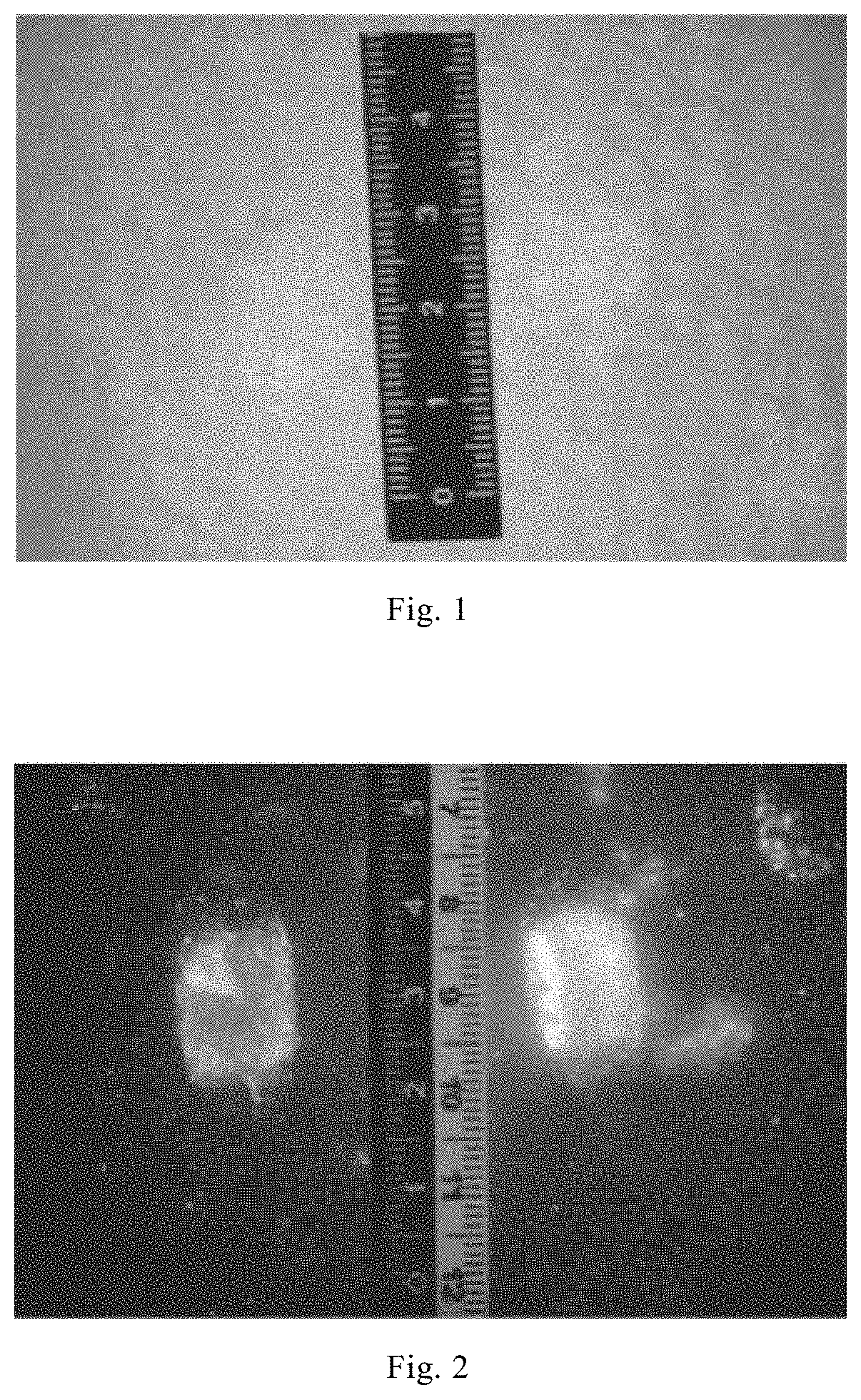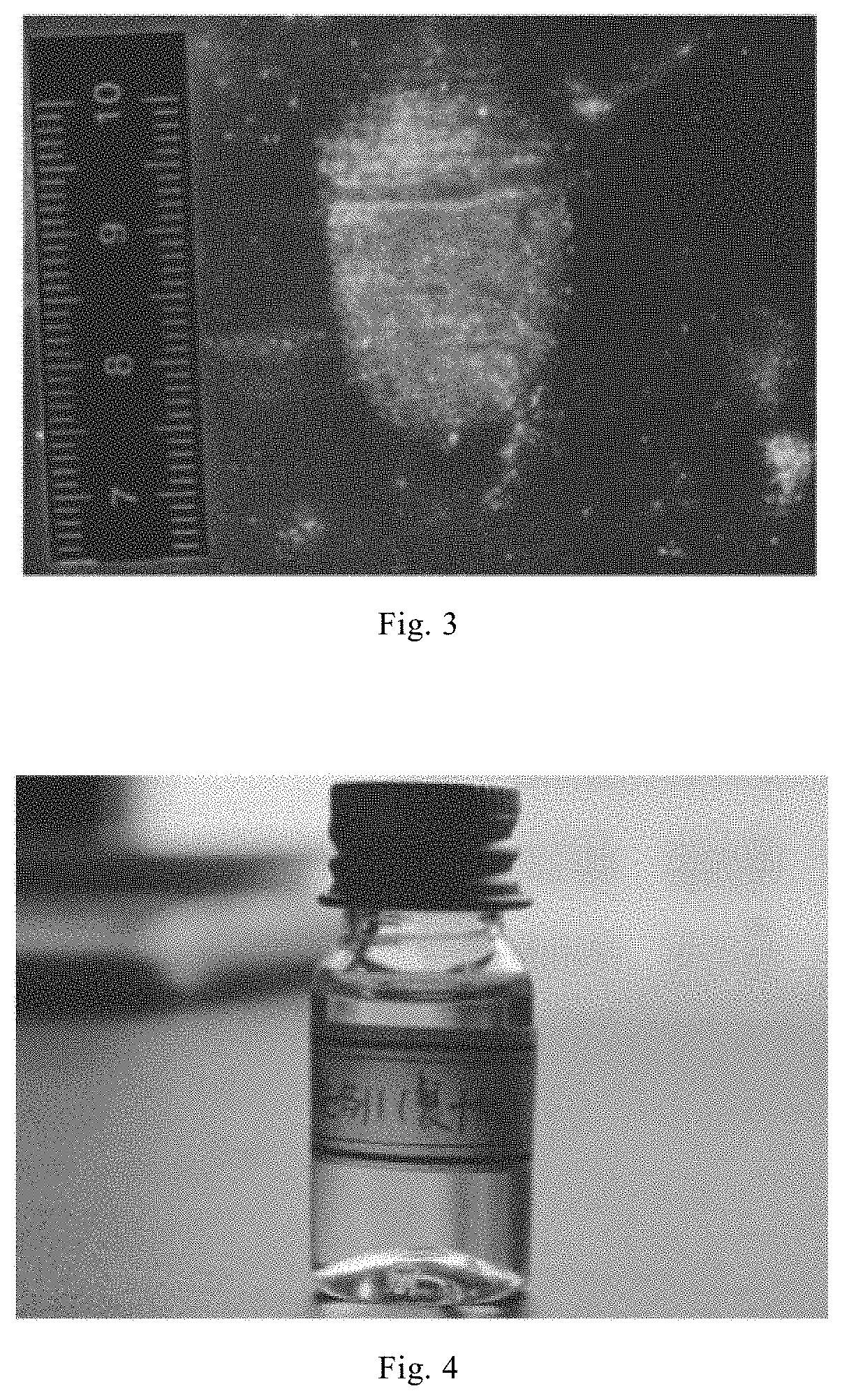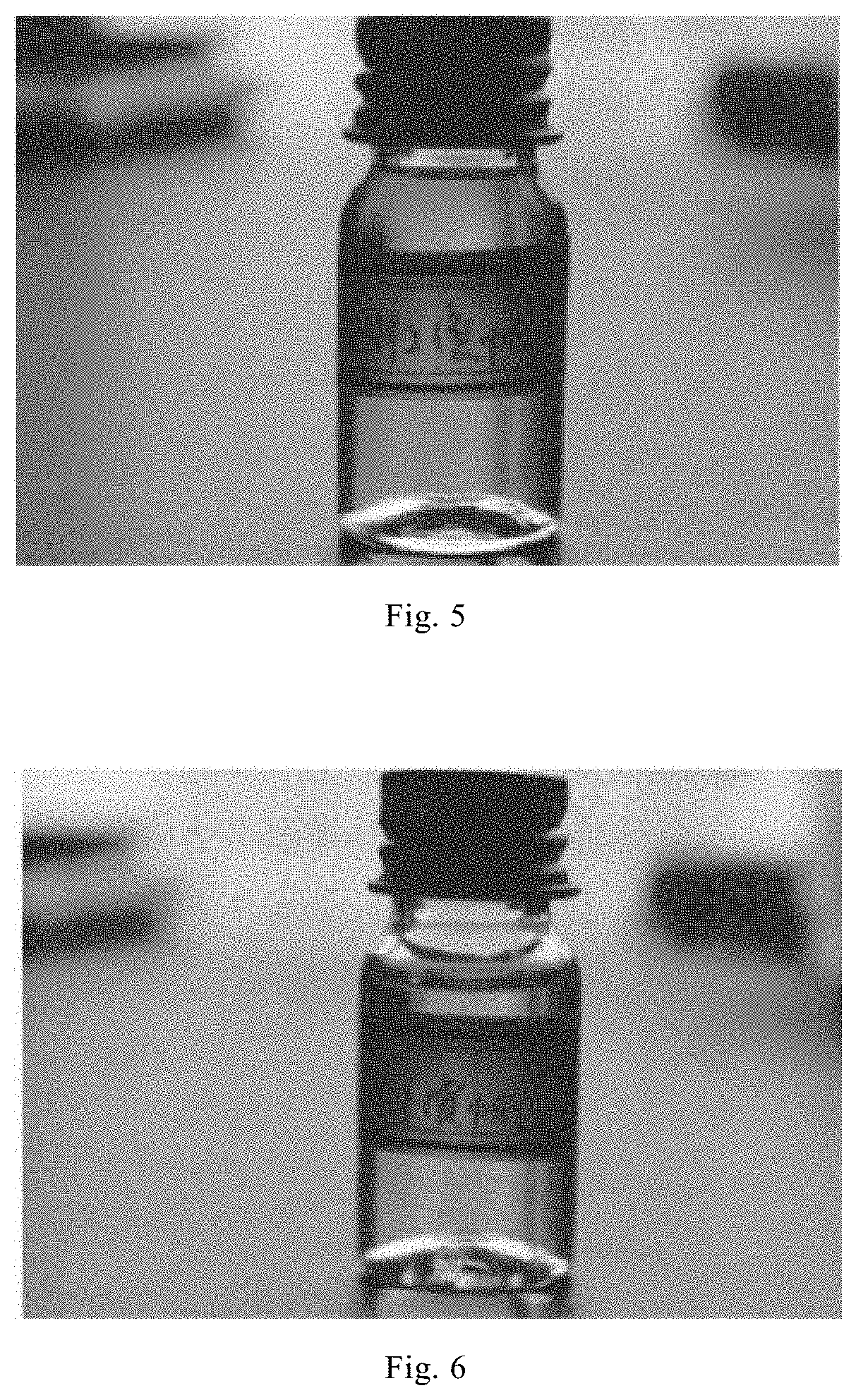Method for developing biological trace evidence on porous object
a technology of biological trace evidence and porous objects, which is applied in the direction of fluorescence/phosphorescence, analysis using chemical indicators, instruments, etc., can solve the problems of unusable use, unfavorable use, and blurred handprint patterns,
- Summary
- Abstract
- Description
- Claims
- Application Information
AI Technical Summary
Benefits of technology
Problems solved by technology
Method used
Image
Examples
embodiment 1 (
the Sample is a Napkin with a Fingerprint)
[0064]This embodiment provides a method for developing a handprint on a porous object, and a formulation of a biological fluorescent development reagent used in this method was: indanedione 0.02 g; ethyl acetate 3 mL; glycerol 0.3 mL; pure alcohol 5 mL; petroleum ether 75 mL.
[0065]The developing method comprises the following steps:
(1) The moisture content of the napkin was controlled by drying to be less than 7%.
(2) In an environment of 25° C. and a relative humidity of 60%, 0.3 mL glycerol was added into 5 mL pure alcohol, and the solution was thoroughly stirred and dissolved to prepare a solution 1; 0.02 g indanedione was sufficiently dissolved in 3 mL ethyl acetate to prepare a solution 2, and the mass concentration of indanedione was 0.0067 g / mL; the solution 1 and the solution 2 were mixed, then 75 mL petroleum ether was added, stirred and dissolved, and formulated into a biological fluorescent development reagent, and the biological f...
embodiment 2 (
the Sample is a Napkin with a Fingerprint)
[0067]This embodiment provides a method for developing a handprint on a porous object, and a formulation of a biological fluorescent development reagent used in this method was: indanedione 0.05 g; ethyl acetate 5 mL; glycerol 0.5 mL; pure alcohol 10 mL; petroleum ether 75 mL.
[0068]The developing method comprises the following steps:
(1) The moisture content of the napkin was controlled by drying to be less than 7%.
(2) In an environment of 25° C. and a relative humidity of 60%, 0.5 mL glycerol was added into into 10 mL pure alcohol, and the solution was thoroughly stirred and dissolved to prepare a solution 1; 0.05 g indanedione was sufficiently dissolved in 5 mL ethyl acetate to prepare a solution 2, and the mass concentration of indanedione was 0.01 g / mL; the solution 1 and the solution 2 were mixed, then 75 mL petroleum ether was added, stirred and dissolved, and formulated into a biological fluorescent development reagent, and the biologi...
embodiment 3 (
the Sample is a Napkin with a Fingerprint)
[0070]This embodiment provides a method for developing a handprint on a porous object, and a formulation of a biological fluorescent development reagent used in this method was: indanedione 0.10 g; ethyl acetate 8 mL; glycerol 0.8 mL; pure alcohol 15 mL; petroleum ether 75 mL.
[0071]The developing method comprises the following steps:
(1) The moisture content of the napkin was controlled by drying to be less than 7%.
(2) In an environment of 25° C. and a relative humidity of 60%, 0.8 mL glycerol was added into 15 mL pure alcohol, and the solution was thoroughly stirred and dissolved to prepare a solution 1; 0.10 g indanedione was sufficiently dissolved in 8 mL ethyl acetate to prepare a solution 2, and the mass concentration of indanedione was 0.0125 g / mL; the solution 1 and the solution 2 were mixed, then 75 mL petroleum ether was added, stirred and dissolved, and formulated into a biological fluorescent development reagent, and the biological...
PUM
 Login to View More
Login to View More Abstract
Description
Claims
Application Information
 Login to View More
Login to View More - R&D
- Intellectual Property
- Life Sciences
- Materials
- Tech Scout
- Unparalleled Data Quality
- Higher Quality Content
- 60% Fewer Hallucinations
Browse by: Latest US Patents, China's latest patents, Technical Efficacy Thesaurus, Application Domain, Technology Topic, Popular Technical Reports.
© 2025 PatSnap. All rights reserved.Legal|Privacy policy|Modern Slavery Act Transparency Statement|Sitemap|About US| Contact US: help@patsnap.com



